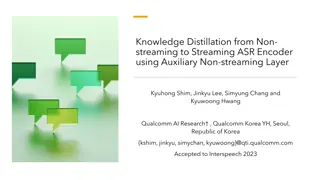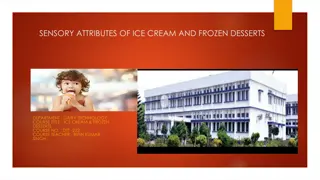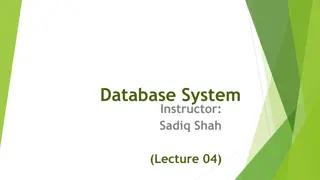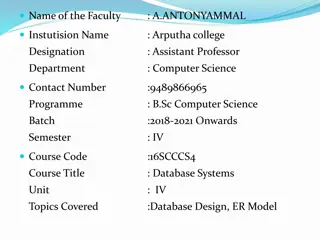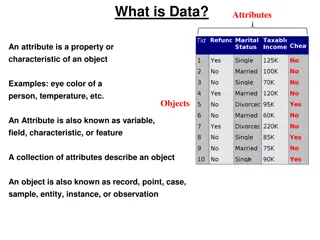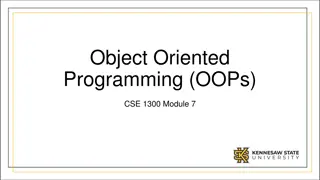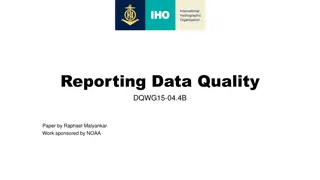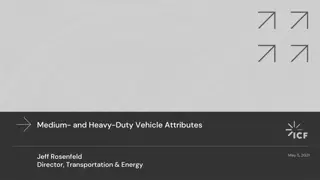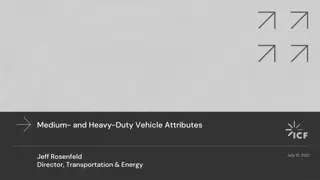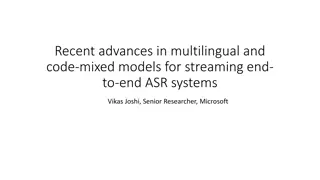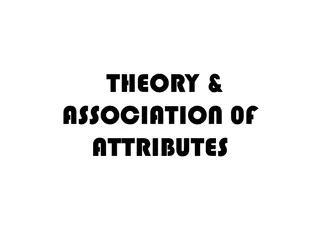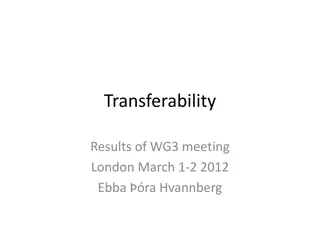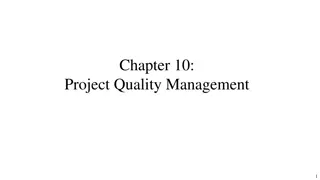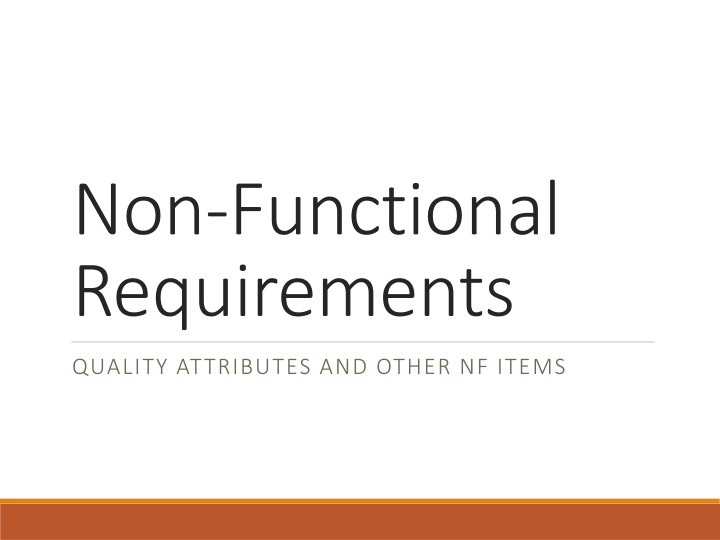
Non-Functional Requirements and Quality Attributes
Explore the various types of requirements including business requirements, quality attributes, and more. Learn the definitions and importance of quality attributes and non-functional requirements in software development. Discover the elements of system requirements, external interfaces, and constraints affecting system design.
Uploaded on | 0 Views
Download Presentation

Please find below an Image/Link to download the presentation.
The content on the website is provided AS IS for your information and personal use only. It may not be sold, licensed, or shared on other websites without obtaining consent from the author. If you encounter any issues during the download, it is possible that the publisher has removed the file from their server.
You are allowed to download the files provided on this website for personal or commercial use, subject to the condition that they are used lawfully. All files are the property of their respective owners.
The content on the website is provided AS IS for your information and personal use only. It may not be sold, licensed, or shared on other websites without obtaining consent from the author.
E N D
Presentation Transcript
Non-Functional Requirements QUALITY ATTRIBUTES AND OTHER NF ITEMS
Types of Requirements Business Requirements Business Rules Vision and Scope Document Quality Attributes User Requirements User Requirements Document External Interfaces System Requirements Functional Requirements Constraints Software Requirements Specification Solid arrow stored in Dotted arrow origin of or influence Software Requirements, 3rd Edition
Types of Requirements Business Requirement: A high-level business objective of the organization that builds a product or of a customer who procures it Business Rule: A policy, guideline, standard, or regulation that defines or constrains some aspect of the business Constraint: A restriction that is imposed on the choices available for the design and construction of a product External Interface Requirement: A description of a connection between a software system and a user, another software system or a hardware device Functional Requirement: A description of a behavior that a system will exhibit under specific conditions Nonfunctional Requirement: A description of a property or characteristic that a system must exhibit or a constraint that is must respect Quality Attribute: A nonfunctional requirement that describes a service or performance characteristic of a product System Requirement: A top-level requirement for a product that contains multiple subsystems User Requirement: A goal or task that specific classes of users must be able to perform with a system, or a desired product attribute Software Requirements, 3rd Edition
Nonfunctional Requirements System requirements Associated hardware, inputs and outputs, major software components System architecture is not necessarily the software architecture External interfaces Interfaces to devices and systems across the system boundary E.g, legacy systems, services, peripheral devices Constraints limiting factors E.g., technology choices, standards, business rules, laws, etc. Quality Items affecting the overall goodness of the system
Definition & Advice Definition: A Quality Attribute is a measurable or testable property of a system that is used to indicate how well the system satisfies the needs of its stakeholders. (SAiP p.39) Advice: How do you know something is an important quality attribute? Ask yourself this question would people still use my application if we have a terrible score on this attribute? Some material in these slides is adapted from Software Architecture in Practice, 3rd edition by Bass, Clements and Kazman.
Quality Attributes Master List Operational categories Availability Interoperability Reliability Usability Performance Deployability Scalability Monitorability Mobility Compatibility Security Safety Developmental categories Modifiability Variability Supportability Testability Maintainability Portability Localizability Development distributability Buildability
Descriptions Others Usability Usability requirements deal with ease of learning, ease of use, error avoidance and recovery, efficiency of interactions, and accessibility. The usability requirements specified here will help the user interface designer create the optimum user experience. Availability Efficiency Installability Performance State specific performance requirements for various system operations. If different functional requirements or features have different performance requirements, it s appropriate to specify those performance goals right with the corresponding functional requirements, rather than collecting them in this section. Integrity Interoperability Modifiability Security Specify any requirements regarding security or privacy issues that restrict access to or use of the product. These could refer to physical, data, or software security. Security requirements often originate in business rules, so identify any security or privacy policies or regulations to which the product must conform. If these are documented in a business rules repository, just refer to them. Portability Reliability Reusability Robustness Safety Specify requirements that are concerned with possible loss, damage, or harm that could result from use of the product. Define any safeguards or actions that must be taken, as well as potentially dangerous actions that must be prevented. Identify any safety certifications, policies, or regulations to which the product must conform. Scalability Verifiability Wiegers, Karl.Software Requirements, 3rd Edition. Microsoft Press PTG, 2014. [Bookshelf Online].
Scenarios Web application for banking Control system for driverless car Describe a: Describe a: - Performance Attribute - Performance Attribute - Security Attribute - Security Attribute - Integrity Attribute - Safety Attribute - Availability Attribute - Reliability Attribute What would be a good example of a Portability Attribute?
Driverless Vehicle Security https://www.gao.gov/assets/680/676064.pdf
Requirements Assumptions and Dependencies Business and technology Assumptions stuff you expect to happen (versus known facts) Project impacts if incorrect or they change Dependencies stuff that is needed from external sources Examples of stuff schedules, budget, contracts, intellectual property, people resources, equipment resources, licenses, standards, regulations, open source software, external APIs, cloud services, development tools,
Examples If you are building a desktop application - Connects to online brokerage system List some assumptions List some dependencies

